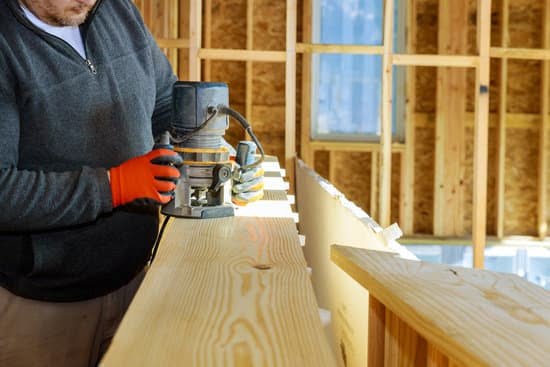Are you wondering how to remove wax from woodwork? Wax can be a great way to protect and enhance the natural beauty of your woodwork, but over time it can build up and become unsightly. In this article, we will explore the importance of removing wax from woodwork and provide you with a comprehensive guide on how to do so effectively.
When wax builds up on woodwork, it can attract dust and dirt, making your surfaces look dull and dirty. Not only does this affect the aesthetic appeal of your woodwork, but it can also compromise the integrity of the finish. Removing wax is essential for maintaining the beauty and longevity of your woodwork.
In this section of the article, we will delve into why removing wax from woodwork is important for preserving its appearance and integrity. We will also discuss how a buildup of wax can impact the overall look of your woodwork and why regular maintenance is crucial for keeping it in pristine condition. So, if you’re ready to learn all about removing wax from woodwork, keep reading.
Identifying the Type of Wax on Your Woodwork
When it comes to removing wax from woodwork, it’s crucial to start by identifying the type of wax that has been used on the surface. Different waxes require different removal methods, so understanding the type of wax is essential for effective removal. Here is a comprehensive guide to help you identify the type of wax on your woodwork:
- Natural Waxes: Natural waxes, such as beeswax and carnauba wax, are often used to polish and protect woodwork. These waxes are typically easy to identify by their natural scent and matte finish.
- Synthetic Waxes: Synthetic waxes, such as paraffin wax and microcrystalline wax, are commonly used in commercial wood polishes and finishes. These waxes often have a shiny or glossy finish and may not have a noticeable scent.
- Colored Waxes: Some wood polishes contain colored waxes, which can make identification a bit trickier. Colored waxes may leave behind a tinted residue on the woodwork, making it easier to spot.
Once you have identified the type of wax on your woodwork, you can proceed with choosing the most suitable method for removing it. Whether natural or synthetic, knowing the type of wax will help you determine the best approach for achieving a wax-free finish on your woodwork.
In addition to visual inspection, you can also perform a simple test using a small amount of rubbing alcohol or mineral spirits on an inconspicuous area of the woodwork. This test can help determine whether the wax is soluble in these solvents, providing further insight into the nature of the wax coating.
By taking these steps to identify the type of wax on your woodwork, you will be better equipped to select an appropriate removal method and achieve optimal results in restoring your wood surfaces.
Tools and Materials Needed for Removing Wax From Woodwork
When it comes to removing wax from woodwork, having the right tools and materials on hand is crucial for achieving a successful result. Before beginning the wax removal process, gather the necessary items to ensure a smooth and effective process. Some of the essential tools and materials needed for removing wax from woodwork include:
1. Soft Cloths: Use lint-free, soft cloths such as microfiber or old cotton t-shirts to wipe off excess wax and polish wood surfaces.
2. Mineral Spirits: This solvent is commonly used to dissolve and remove wax buildup from wood surfaces. Ensure good ventilation when using mineral spirits and use gloves to protect your skin.
3. Wood Cleaner: Choose a mild wood cleaner that is safe for your specific type of woodwork to help remove any remaining residue after using mineral spirits.
4. Fine Steel Wool: In some cases, fine steel wool can be used to gently scrub away stubborn wax buildup without damaging the wood surface.
5. Protective Gear: When working with chemicals like mineral spirits, it’s important to protect yourself with gloves, eye protection, and proper ventilation.
6. Wax Remover Solution: There are commercially available wax remover solutions specifically designed for wood surfaces that can make the removal process easier and more effective.
By ensuring that you have these tools and materials ready before starting the wax removal process, you can effectively prepare yourself for a successful outcome in restoring your woodwork to its original beauty. In the next section, we will provide a step-by-step guide on how to remove wax from woodwork using these tools and materials effectively.
Step-by-Step Guide
Preparation and Safety
Before you begin the process of removing wax from your woodwork, it’s important to gather all the necessary tools and materials. This can include a putty knife, clean soft cloths, mineral spirits or a commercial wax remover, and fine steel wool. It’s also crucial to work in a well-ventilated area and wear protective gloves to avoid any potential skin irritation from the wax removal products.
Inspecting the Woodwork
Start by carefully examining the woodwork to identify areas where wax accumulation is most significant. This will help you focus your efforts on those specific areas during the removal process. It’s also important to consider the type of wood and finish on the surface, as this can determine the best method for removing the wax without causing damage.
Removing the Wax
Begin by gently scraping off as much of the excess wax as possible using a putty knife or plastic scraper. Be sure to work in the direction of the wood grain to minimize any potential scratches or damage.
Once you have removed as much wax as possible, apply a small amount of mineral spirits or commercial wax remover onto a clean cloth and gently rub it into the remaining wax residue. You may need to repeat this process several times until all traces of wax are removed from the woodwork.
By following these step-by-step instructions, you can effectively remove wax from your woodwork without causing any damage while restoring its natural beauty.
Tips and Tricks for Effective Wax Removal
When it comes to effectively removing wax from woodwork, there are several tips and tricks that can make the process easier and more successful. One of the most important things to keep in mind is to always test any cleaning solutions or methods on a small, inconspicuous area of the woodwork before proceeding with the full cleaning process. This will help you ensure that the solution or method is safe for your specific type of wood.
One effective tip for removing wax from woodwork is to use a hairdryer on a low heat setting to gently warm the wax. Once the wax has softened, you can carefully scrape it off with a plastic putty knife or another non-abrasive tool. It’s important to be gentle during this process to avoid damaging the wood underneath.
Another helpful trick for effective wax removal is using a mixture of equal parts white vinegar and water as a natural cleaning solution. Simply apply the solution to a soft cloth and gently rub it onto the wax until it starts to soften. Then, use a clean cloth to wipe away the softened wax. This method is particularly useful for removing stubborn or colored waxes from woodwork.
Additionally, using an absorbent material such as brown paper or a paper towel over the softened wax can help to lift it off the wood surface more easily. Simply place the absorbent material over the softened wax and apply gentle pressure with your hand. The material should start absorbing and lifting away the softened wax, making it easier to remove completely.
By following these tips and tricks for effective wax removal, you can successfully restore your woodwork to its original, wax-free state without causing any damage in the process.
Avoiding Damage to Woodwork During Wax Removal
When it comes to removing wax from woodwork, it’s crucial to do so without causing any damage to the wood. The last thing you want is to inadvertently strip the finish or create scratches and dents in the process of wax removal. Fortunately, there are several techniques you can employ to avoid damage while effectively removing wax from your woodwork.
Using Gentle Pressure and Soft Cloths
One of the key principles in avoiding damage during wax removal is to use gentle pressure and soft, non-abrasive cloths. Avoid using harsh scrubbing pads or abrasive materials that could potentially scratch or mar the surface of the wood. Instead, opt for soft microfiber cloths or cheesecloth that will safely lift away the wax without harming the wood underneath.
Choosing Suitable Solvents or Cleaners
Selecting the right solvents or cleaners is essential for avoiding damage during wax removal. Be sure to choose products that are specifically designed for use on wood surfaces and that won’t compromise the finish. Additionally, always spot test any solvent or cleaner in an inconspicuous area before applying it to a larger portion of the woodwork.
Working in Small Sections
To minimize the risk of damage during wax removal, work in small sections at a time rather than attempting to tackle an entire piece of woodwork all at once. This approach allows you to carefully control the process and address any potential issues as they arise without accidentally causing harm to a larger area.
By following these tips and techniques, you can effectively remove wax from your woodwork without causing any damage. Taking a cautious and deliberate approach will ensure that your woodwork remains beautifully preserved throughout the wax removal process.
Alternative Methods for Removing Wax From Woodwork
When it comes to removing wax from woodwork, there are a few alternative methods that can be effective depending on the type and severity of the wax build-up. One alternative method is using a mixture of vinegar and water to break down the wax. Simply mix equal parts of white vinegar and water in a spray bottle and lightly mist the affected area.
Let it sit for a few minutes before wiping it away with a clean cloth. The acidity of the vinegar helps to dissolve the wax without causing damage to the wood.
Another alternative method involves using a hairdryer or heat gun to soften the wax before wiping it away. Use the lowest setting on the hairdryer or heat gun and gently heat the wax until it becomes soft and pliable. Be careful not to hold the heat source too close to the wood as this can cause damage. Once softened, use a clean cloth to wipe away the wax, moving in the direction of the wood grain for best results.
For stubborn or old wax build-up, you can try using mineral spirits or denatured alcohol to dissolve and remove the wax. Apply a small amount of either substance onto a clean cloth and gently rub it onto the affected area. Make sure to test these products on an inconspicuous area first to ensure that they do not damage or discolor your woodwork.
It’s important to note that regardless of which alternative method you choose, always follow up with a gentle cleaning with mild soap and water to remove any residue left behind by the wax removal process.
| Alternative Method | Description |
|---|---|
| Vinegar and Water Mixture | Mix equal parts vinegar and water in a spray bottle, mist onto affected areas, let sit, then wipe away. |
| Heat Gun or Hairdryer | Use low heat setting on hairdryer or heat gun to soften wax, then wipe away with clean cloth. |
| Mineral Spirits or Denatured Alcohol | Apply small amount onto cloth, rub onto affected area, then follow up with mild soap and water cleaning. |
Final Thoughts
In conclusion, removing wax from woodwork is an essential part of maintaining the beauty and longevity of your wooden furniture and surfaces. As discussed in this article, identifying the type of wax on your woodwork is crucial in choosing the right tools and materials for effective removal. Additionally, following a step-by-step guide and utilizing tips and tricks can ensure that the process is carried out successfully without causing damage to the woodwork.
It is important to remember that regular maintenance and upkeep are key to maintaining a wax-free finish on your woodwork. By preventing the buildup of wax and regularly cleaning and polishing your wooden surfaces, you can prolong their lifespan and keep them looking pristine. In doing so, you can avoid the need for frequent wax removal processes while also retaining the natural beauty of the wood.
In instances where traditional methods may not be suitable or effective, alternative methods such as using heat or specialized solvents can be considered for removing stubborn wax from woodwork. However, it is important to exercise caution and seek professional advice if necessary to prevent any potential damage to the wood.
Overall, by understanding how to remove wax from woodwork effectively and implementing preventive measures, you can ensure that your wooden furniture and surfaces remain in top condition for years to come.

Hi everyone! I’m a woodworker and blogger, and this is my woodworking blog. In my blog, I share tips and tricks for woodworkers of all skill levels, as well as project ideas that you can try yourself.





